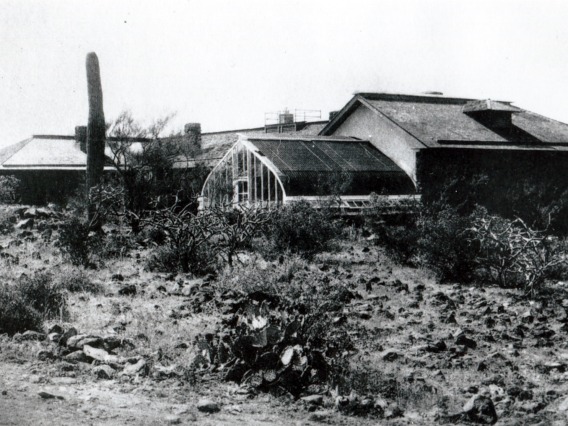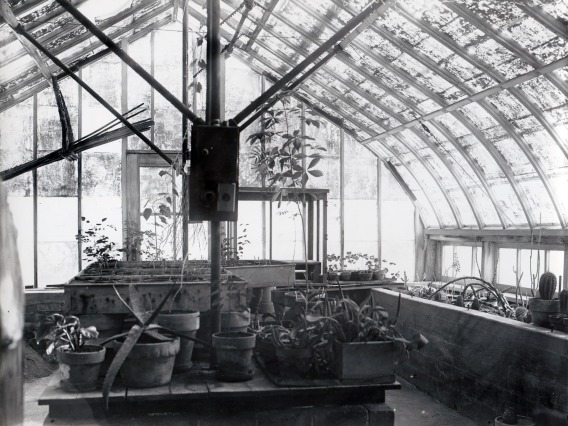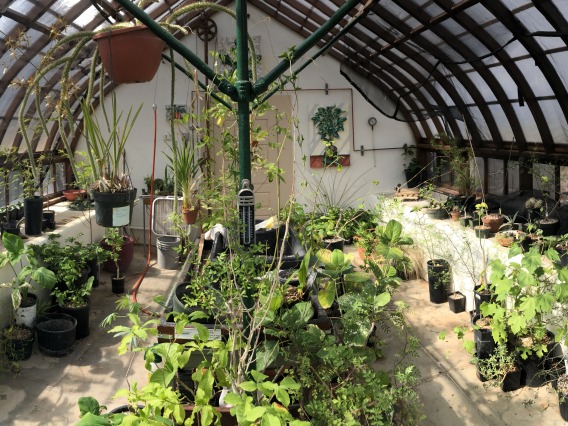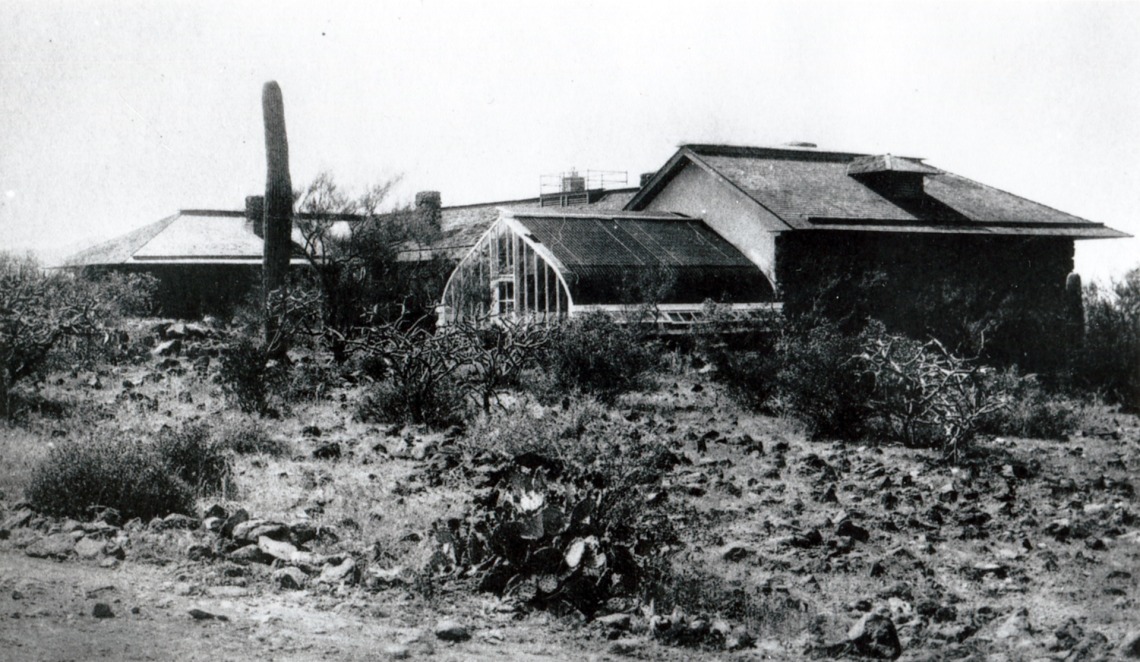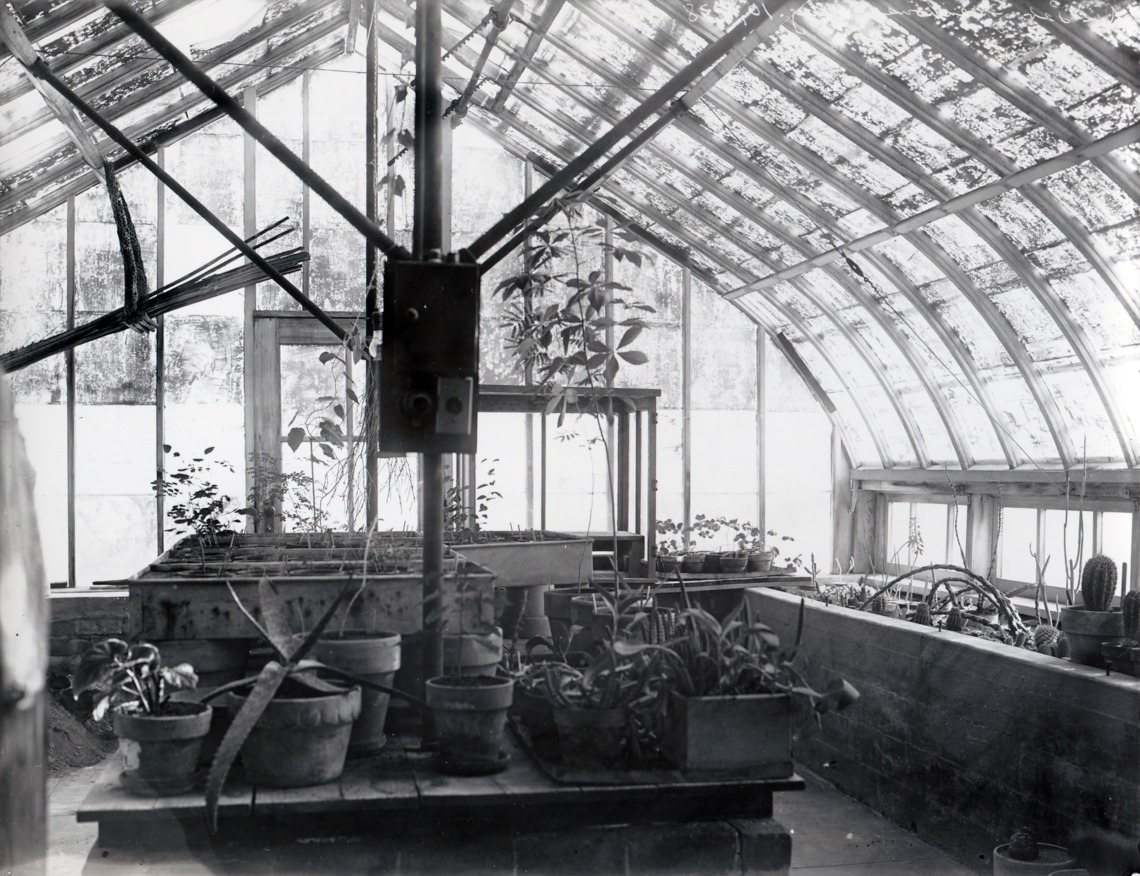Since the Desert Lab’s inception, its members have grown plants that represent the unique biocultural diversity of the Sonoran Desert region and from continents where very similar habitats produce unrelated plants that look nearly identical to our native species – an example of convergent evolution. Prehistoric, evolutionary, and cultural stories and scenarios are represented by plants that can look ordinary, strange, and beautiful to the casual observer, while sparking intrigue and contemplation about our presence in and responsibility to the places we call home.
The Lab maintains three primary living collections, (1) the Desert Laboratory Greenhouse, (2) the Sonoran Plant Garden, (3) The Tumamoc Resilience Garden Shade house.
A Diversity of Specimens
Our plants are sourced from expeditionary projects, and by exchanges and donations from our world-class, generous plant-growing community. As a result, we grow all 11 species of the ocotillo/boojum family, Fouquieriaceae. See below for a selection of other interesting species.
Plants in the collection that bear the name of lab scientists, or colleagues and friends:
- Agave felgeri (Felger’s Agave): Named for eminent botanist and scientist of the Sonoran Desert Richard Felger
- Agave shreveii (Shreve’s Agave): Named after the first to map the Sonoran Desert region, Forrest Shreve
- Bursera exequielii (Exequiel’s Bursera): Named after Chilean ecologist and conservationist Exequiel Ezcurra
- Echinocereus gentryi (Gentry’s Hedgehog Cactus): Named for pioneering botanist of tropical Sonora Howard Gentry
- Fouquieria shreveii (Shreve’s Ocotillo): Named after the first to map the Sonoran Desert region, Forrest Shreve
- Tumamoca macdougalii (Tumamoc Globe Berry): Named after Tumamoc Hill and founding director Daniel MacDougall
Greenhouse
Originally built in 1906, it may be considered Tucson’s first greenhouse (perhaps also Arizona’s first?). Originally fitted with a lattice shade structure, the greenhouse was rebuilt once by former director Paul Martin before its current iteration as a specially designed steel beam structure that maintains its historic appearance.
Notable Species:
- Agave aktities
- Bletia purpurea (terrestrial orchid)
- Bursera grandifolia
- Cissus verticillata
- Celtis iguanea (Iguana Berry)
- Cyrtocarpa edulis (Ciruela)
- Dorstenia drakena (Primitive Fig, Ground Fig, Baiburilla)
- Encylia adenocarpa (fragrant orchid)
- Euphorbia misera
- Ipomoea ancisa (Bush Morning Glory)
- Lippia umbellata (Tree Lemon Balm)
- Montanoa tomentosa rosei (Tree Daisy, Batayaqui)
- Pereskiopsis porteri (leafy cactus)
- Randia mollifolia (Sapuchi de Monte, coffee family)
- Selenicereus vagans (tropical night-blooming cactus)
- Sideroxylon tempicense (Tempisque)
- Tillandsia sp.
- Vitex mollis (Uvalama)
- Xanthosoma hoffmannii (Aroid)
- Psidium sartorianum (wild relative of Guayaba, Arrellán)
Art in the Greenhouse
For its 21st-century restoration, the greenhouse north wall is graced by the unique and distinctive work of internationally recognized artist, Nick Georgiou, a Tucson-based artist from Queens.
The artworks are portraits of plant specimens, including a leaf of Tumamoca macdougalii, named for Tumamoc Hill and the founding director of the Desert Laboratory, Daniel MacDougall, originally of the New York Botanical Garden.
Nick’s work contemplates the value and meaning of printed matter, conveying his perspective and sentiments. He meticulously tiles pieces of chopped and painted books, journals, and other printed matter into a mosaic of meaning and representation. This is especially pertinent if we define books as codices, from the Latin caudex, meaning “tree trunk,” “block of wood,” or “book”. All of these representations bear layers imprinted with information about the past, informing the present, and future.
Outdoor Garden Spaces
In pots on the patio:
- Agave jaiboli (Highball Agave)
- Bursera microphylla (Aromatic Elephant Tree, Torote)
- Bursera penicillata (Torote, Palo Santo [South America])
- Dioon sonorense (Sonoran Cycad, Palma de la Vírgen, Peine)
- Ficus palmeri (Baja Rock Fig)
- Ficus pertusa (Nacapule, Sonoran Strangler Fig)
- Hechtia montana (pineapple relative)
- Jatropha cinerea (Ashy Limberbush, Sangrengado)
- Manihot cf. caudata (Giant Blue-leaved Manioc)
- Pachycormus discolor (Baja Elephant Tree)
- Plumeria rubra (Frangipani, Plumeria, Cascalosúchil)
In the ground surrounding the patio:
- Brongniartia alamosana (Mexican Pea Tree, Palo Piojo)
- Ceiba aesculifolia (Kapok tree)
- Fouquieria burragei (Baja Ocotillo)
- Fouquieria columnaris (Boojum, Cirio)
- Guaiacum coulteri (Hollywood, Guayacán ): Likely planted by a lab member in the 60s/70s. A tropical member of the creosote family
- Lophocereus schottii (Sina): Also planted in the early years of the lab
- Pachycereus palmeri (Cardón, Sahueso)
- Stenocereus thurberi (Organpipe, Pitahaya): Planted in the early years of the lab


